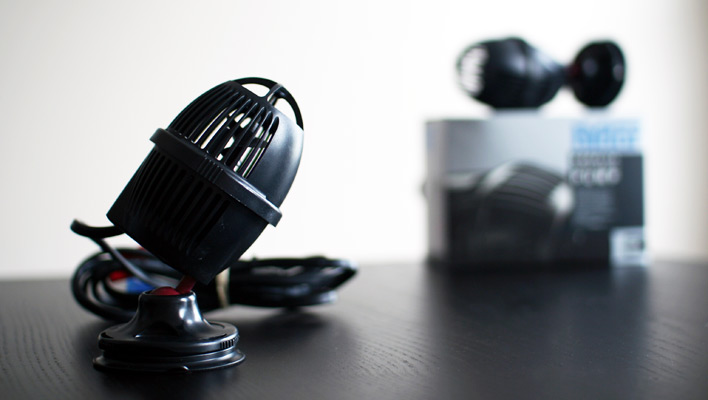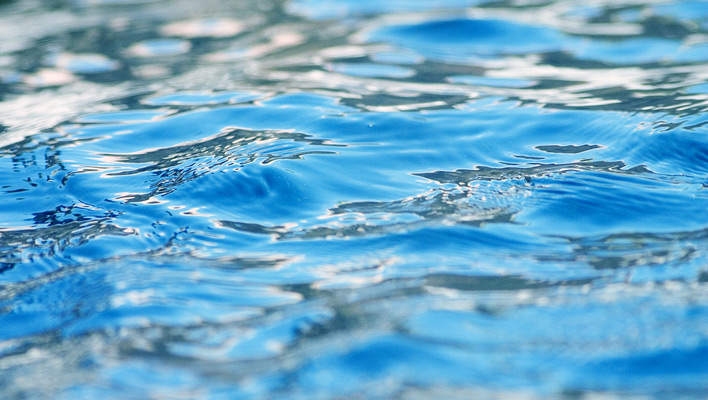Water on the coral reefs is ever on the move. Constantly shifting currents, changing tides, and rolling or crashing waves make for quite a dynamic environment that saltwater aquarium hobbyists must attempt to recreate in their systems for the health of the fish and invertebrates in their care.
Water movement performs several vital functions in the saltwater aquarium, among them:
- Keeping fish waste and uneaten food suspended in the water column so they can be filtered out of the system
- Aiding in gas exchange/oxygenation
- Delivering particulate foods and dissolved nutrients to corals and other sessile (attached) invertebrates, preventing detritus from settling on their tissues, and carrying off their waste products
- Promoting a uniform water temperature throughout the water column
- Discouraging irksome cyanobacteria (blue-green algae) from gaining a foothold on the rocks and substrate
- Keeping fish healthy by giving them more natural resistance to swim against
- Promoting robust coral growth
- Imparting movement to non-living food items, which makes them appear more natural and harder for fish to resist
Keep it turbulent
Anyone who has ever dived on a coral reef is well aware that the water movement in the reef environment tends to be turbulent (random and multidirectional) rather than laminar (uniformly flowing in one direction). Thus, turbulent flow is what we should strive to achieve in our saltwater aquariums. The challenge we face is somehow creating turbulent flow when, generally speaking, the water-circulation devices we have to work with—i.e., powerheads, sump or closed-loop pump returns, canister filter returns, etc.—tend to move water in a straight line.
 However, it is possible to create more chaotic water movement using these devices, for example by deflecting their outputs off the aquarium glass or rockwork or by positioning two or more powerheads so their outputs intersect one another in the water column and scatter to create turbulence.
However, it is possible to create more chaotic water movement using these devices, for example by deflecting their outputs off the aquarium glass or rockwork or by positioning two or more powerheads so their outputs intersect one another in the water column and scatter to create turbulence.
Other ways to mix it up
In addition to strategic placement of powerhead, filter, and external pump effluents, saltwater aquarium hobbyists can take advantage of various devices available on the market that are designed to help them mix up their water movement. For instance, rotating deflectors can be attached to powerheads to continually change the direction of their output. An electronic wavemaker can be used to turn powerheads on and off in an alternating fashion to create a wave effect. A switching current water director (or SCWD) installed in a pump return line will switch the pump’s effluent between two alternating outputs for a little wave action. And that’s just scratching the surface!




I would like some input on where I should place my powerheads and return pump in my 55gal (48″x13″x15″). I have a 2100gph return pump from my sump that I placed on the far top back left corner and a dual 1600gph powerhead on the far top back right corner. Both of these point to the front center of the display. I cycle the powerhead on and off with a wavemaker. Do I need more flow, should I not have the flows collide, should I move them to different locations like midway down the side (i want to keep the return pump close to the top to reduce backflow into the sump when turned off)? Any advice would be appreciated.
Sorry to take so long to respond, Gmailer, but my power and internet access were both out for most of yesterday. A falling tree took out the wires in my neighborhood. But now I’m back!
It sounds to me and Chris as though you’ve got plenty of flow in the tank (though the amount of current needed in any system will vary according to the invertebrates kept, aquascaping, and other factors), and the colliding effluents combined with the wave action should create a good chaotic flow pattern, so no worries there. If you notice dead spots (visibly slack current, detritus buildup, etc.) in the lower reaches of the tank, you might consider moving the powerhead lower down (the sump return should provide adequate surface agitation), but I’d watch to see how your corals respond to the current flow pattern and adjust from there.
Hope that helps!
Thanks for the response. Good to hear you are back online.
There are some dead spots in the bottom corners so I will move one of the power heads lower.
I appreciate you guys taking the time to provide the community with so many well written articles. nearly all of the articles are relevant to the beginner/intermediate hobbyist like me.
Thanks so much for your kind words! Keep us posted on your tank’s progress!
An experiment that has gone well for me. I have a vortech mp10 on a 29 gallon. It is great for different velocities, but they are one directional. They are too expensive for me to justify me adding another. I have placed a maxi jet 400 opposing it. As the mp10 increases velocity it “wins” and pushes water, as the mp10 slows down the flow from the maxi jet is greater. It has made for great alternating current in my small tank. I have to imagine this would work well with larger vortechs in larger tanks as well.
Great tip, Matt. That’s an approach I’ve never considered. Thanks!
Jeff